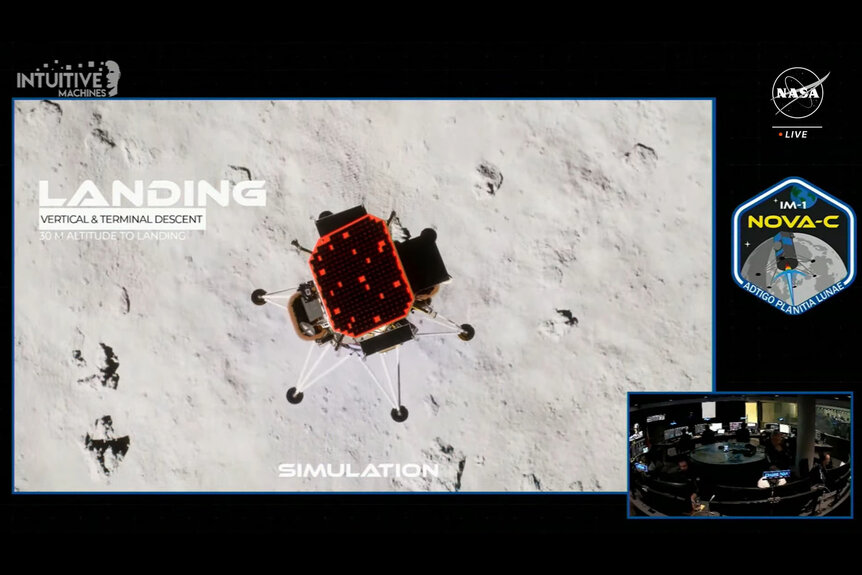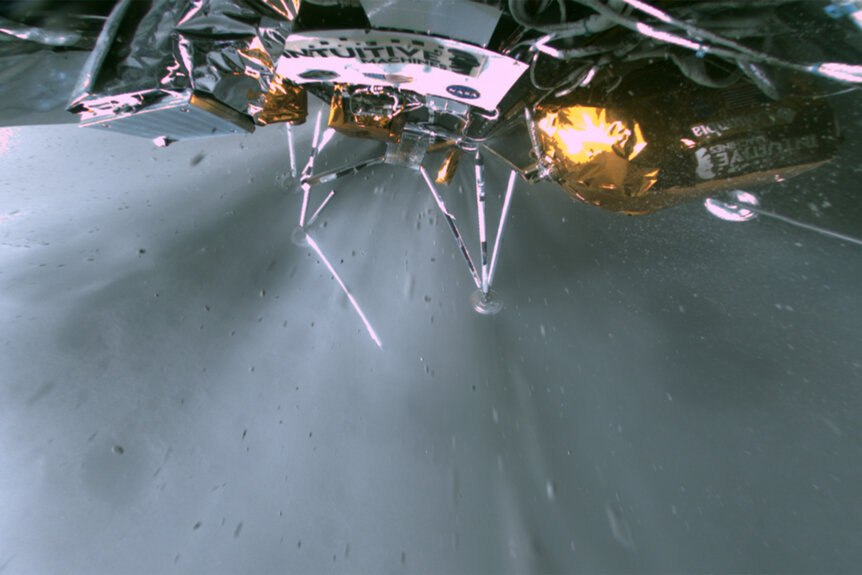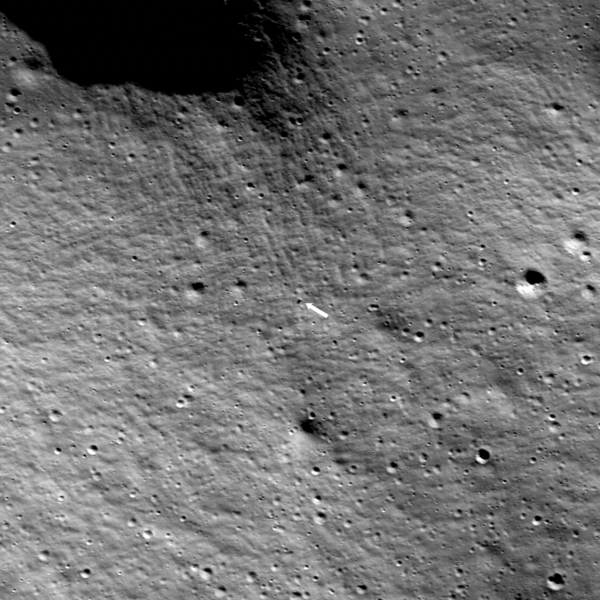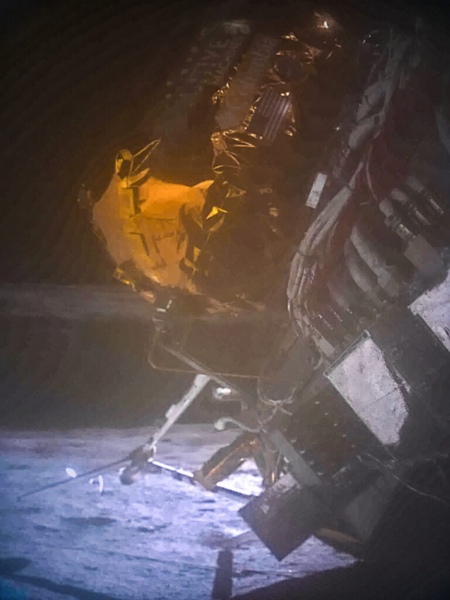Create a free profile to get unlimited access to exclusive videos, sweepstakes, and more!
Odysseus Lunar Lander Returns U.S. to the Moon for the First Time in More Than 50 Years
Intuitive Machines becomes the first commercial company to soft-land on the Moon.
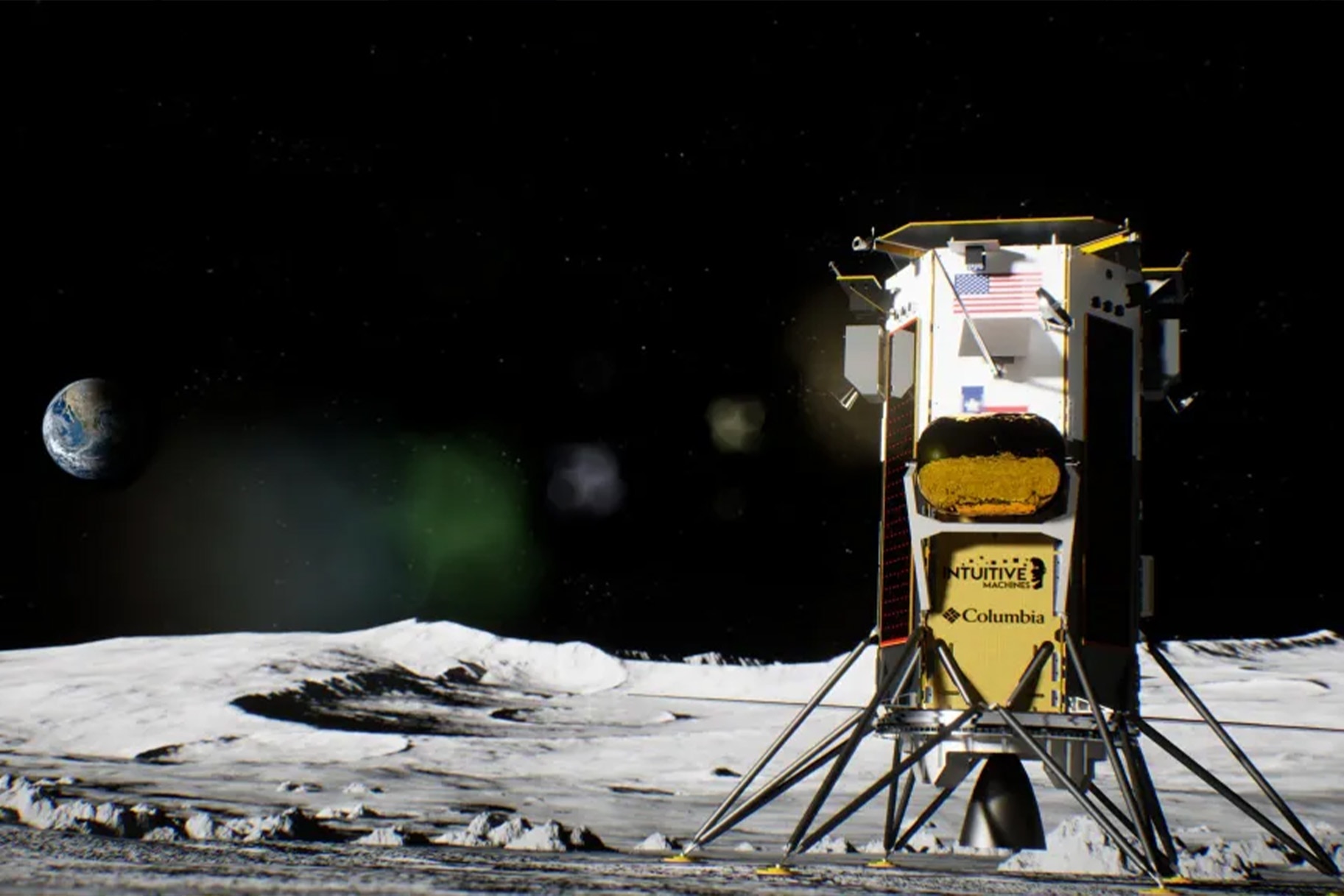
In December of 1972, Eugene “Gene” Cernan and Harrison Schmitt became the last two human beings to walk on the Moon. Apollo 17 was the longest lunar mission, clocking in at just over 12 and a half days, and it served as an end cap on humanity’s crewed operations on the Moon. You can see the story of that last Moon mission in Last Man on the Moon, streaming now on Peacock.
The United States hasn’t soft-landed anything on the Moon, human or machine, ever since. At least, that was true until February 22, 2024, when the commercially built and operated Odysseus lunar lander successfully touched down near the Moon’s South Pole. NASA is working with commercial partners to put scientific missions on the Moon’s surface in advance of the Artemis program, which aims to return human astronauts to the surface of the Moon before the end of the decade.
As part of the Commercial Lunar Payload Services program (CLPS), NASA provides funding to commercial companies in exchange for ferrying NASA payloads to the Moon. The companies in question have end-to-end responsibility for the missions themselves. They design and build the landers and they control the actual mission once it's off the ground.
For More on the Moon:
Japan’s SLIM Lunar Lander Is Still Alive, Despite Landing Upside-Down
NASA Laser Hit an Oreo-Sized Mirror on the Moon from Orbit
Watch Russia's Crashed Luna-25 Punch a New Crater into the Moon's Surface
Intuitive Machines' Odysseus Lunar Lander Returns the U.S. to the Moon!
The launch comes on the heels of two recent landing attempts from other organizations. Astrobotic, another commercial company who received funding under CLPS recently attempted to put their Peregrine lander on the Moon and missed. A fuel tank problem during the flight made it impossible for the craft to touch down and it was sent back to Earth to be destroyed. The Japanese Aerospace Exploration Agency (JAXA) put their SLIM lander on the Moon and achieved an incredible pinpoint landing, but they accidentally landed upside down. Landing on the Moon is hard.
The Nova-C class lunar lander from Intuitive Machines was the next lunar at-bat for the U.S., and for a commercial Moon landing. Intuitive Machines has at least three landing missions planned, all of which will use their Nova-C class lander. For IM-1, the lander was named Odysseus and is affectionately called Odie, for short.
After a beautiful launch and flawless journey, Odie arrived in lunar orbit on February 21, a day ahead of its planned landing. When it got ready to descend, however, mission controllers discovered that the lander’s laser range finders weren’t working. That meant the lander couldn’t see where it was or where it was going. Fortunately, Odie was carrying six NASA payloads, including the Navigation Doppler Lidar (NDL), designed specifically for precise velocity and range sensing.
Nova Control (Intuitive Machines’ name for their Mission Control center) worked up a quick software patch, beamed it to the lander, and turned on the NDL. That crisis averted, Odysseus made for the surface and touched down successfully on the rim of the crater Malapert A, about 190 miles from the Moon’s South Pole. That’s roughly the same region Artemis astronauts will be exploring in person, in coming years. Watch the landing happen in real time in NASA's livestream video of the event, below.
Despite the successful landing, it wasn’t an immediate celebration inside Nova Control. A communications issue during landing made it unclear if Odie was alive or not. After a few tense moments, mission director Tim Crain confirmed that Odysseus was on the ground and transmitting. The signal was faint, but it was there.
An update from Intuitive Machines February 23 confirmed, “Odysseus is alive and well. Flight controllers are communicating and commanding the vehicle to download science data. The lander has good telemetry and solar charging. We continue to learn more about the vehicle’s specific information (Lat/Lon), overall health, and attitude (orientation).”
Getting onto the lunar surface was only the beginning. Already, the folks at Intuitive Machines are hard at work building IM-2 and IM-3. They’ve already pulled off one magic trick, here’s hoping they can repeat it.
Odysseus Moon Landing Photos
In the days since Odysseus touched down on the lunar surface, we've learned more about what went right and what went wrong. That software patch Nova Control spun up to use NASA's NDL for landing had a tiny error in the code. It meant that Odie didn't zero out its horizontal motion completely before contacting the surface. Put another way, Odie hit the ground running and tipped over.
Fortunately, the lander came to rest in such a way that the solar cells could still get energy and the payloads could still operate. Odysseus survived on the Moon for about a week, collecting scientific data and beaming it back to Earth.
NASA's Lunar Reconnaissance Orbiter (LRO) caught a glimpse of IM-1 near Malapert A on February 24. It snapped a long shot from 56 miles (90 kilometers) above the surface of the Moon. Later, NASA and Intuitive Machines released an image from Odie's perspective. It shows the lander tipped over on the surface, the lunar landscape trailing away in the distance.
Mission controllers shut the lander down on February 29, at approximately 11:00 a.m. Central, as that part of the Moon descended into lunar night. The lander's payloads had been collecting data throughout the mission, during transit as well as during and after landing. By the end, mission operators had downloaded roughly 350 megabytes of scientific data from the mission.
IM-1 was intended to work for a lunar day. Once Odysseus goes to sleep, it's not expected to wake up again. Still, Nova Control put Odie into a state that allows him to call home if and when he wakes up when the Sun rises on the Moon in a couple of weeks.
Revisit the last time we went there in Last Man on the Moon, streaming now on Peacock.
Originally published Feb 23, 2024.
